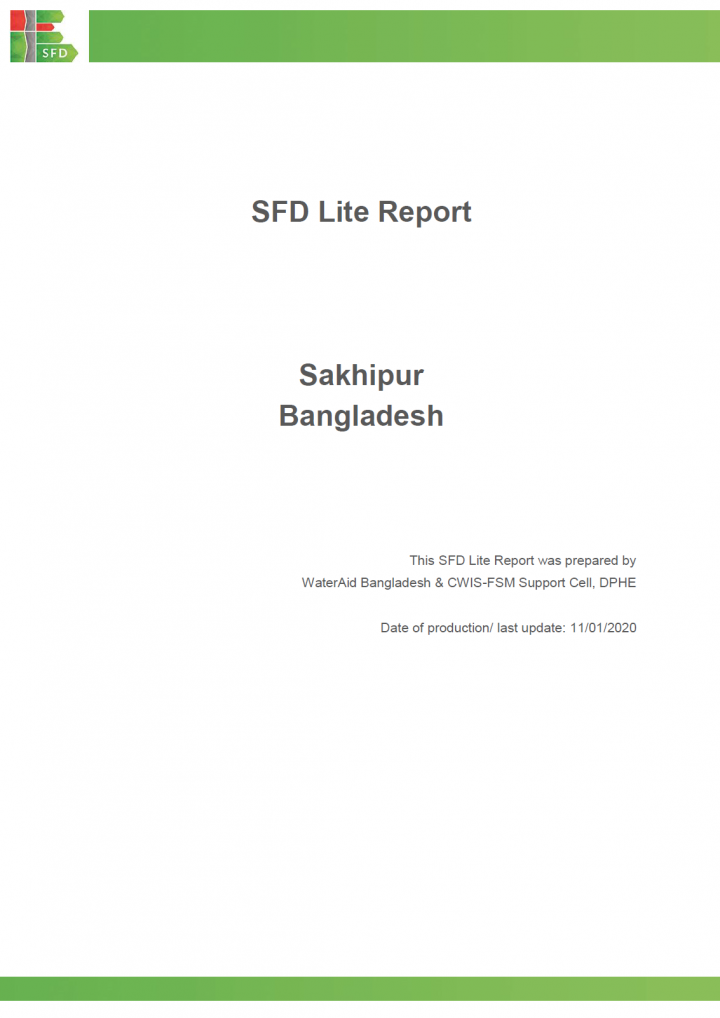
Author(s): WaterAid Bangladesh & CWIS-FSM Support Cell, DPHE
Published in: 2020
Pages: 10
Publisher: WaterAid Bangladesh & CWIS-FSM Support Cell, DPHE
SFD Lite Report - Sakhipur, Bangladesh
Sakhipur, recognized as municipality, is a town of Sakhipur Upazila which is located about 39 km by road from Tangail and 77 km northwest of Dhaka city, the capital of Bangladesh. Sakhipur became a Pourashava (municipality) in October 2000. It has an annual income of 6 million Bangladeshi Taka (BDT) over the last three years which makes it an âAâ category Pourashava. Sakhipur municipality consists of 9 wards and 18 mohallas covering an area of 13.77 square kilometres (BBS, 2011).
According to the Census of Bangladesh Bureau of Statistics (BBS) in 2011, the number of households in Sakhipur municipality is 7,473 and the total population is 30,028. With a national population growth rate of 1.37 (MSVSB, 2018; BBS, 2019), the estimated total population in 2020 is about 33,940 with population density of around 2,465 per square kilometre which is very high as compared to the national population density of 1,265 per square kilometre. The literacy rate is 57.6% (BBS, 2011).
The city does not have a dedicated sewerage system though everyone in the city has access to toilet, hence no open defecation. The whole city mainly relies on onsite sanitation systems like pit latrines and septic tanks. However, currently, installation of septic tanks is on the rise. Both fully lined tanks (container type) and properly designed septic tanks are usually called septic tanks. Generally, septic tanks are used in institutions, community and public toilets while people mostly construct fully lined tanks at household level.
Majority of households in Sakhipur municipality are dependent on groundwater sources. The groundwater is typically extracted from a depth of 30-40 feet (9-12 metres). Around 82.09% of the people use tube-well as the source of drinking water while 0.67% use tap, 0.47% rely on pond and 16.83% corresponds to other sources (BBS, 2011). There is no provision of municipal water supply. Risk of groundwater pollution is high throughout the municipality.
Keywords


